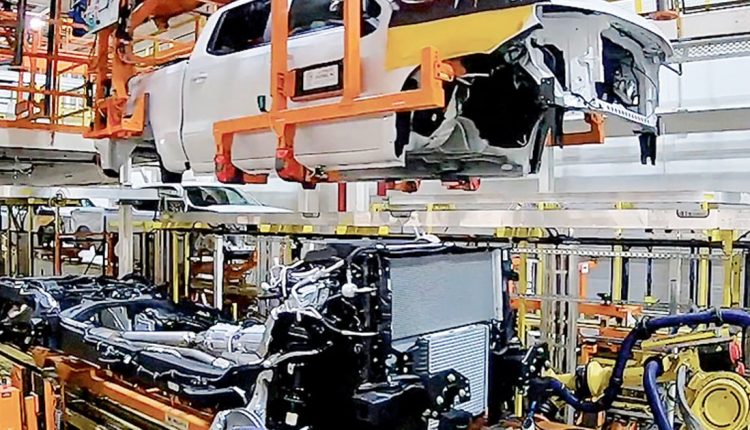“We’re committed to actively managing production levels to balance supply with demand,” Jacobson said on the call.
“Within this portfolio target, trucks are expected to run at higher levels, reflecting greater customer-driven variation requirements, and sedans and SUVs are expected to run at this range or lower,” Jacobson added. “Throughout the year, sales seasonality, production schedules and timing of fleet deliveries may take us out of this range from time to time, but that is the targeted range at which we’ll manage.”
Keith McCluskey, CEO of McCluskey Chevrolet in Cincinnati, said Silverado supplies have reached a balanced level, with his days’ supply running at about 45 to 60 days, up from about 15 to 20 days at the height of the chip crisis. Idling the plant, he said, is “the right thing to do to just, again, keep a healthy balance on supply and demand and inventory levels.”
Cox Automotive estimated that the Sierra has more than an 80-day supply, while inventory levels top 100 days for the Silverado. GM said those and other third-party estimates are too high, but the company wouldn’t disclose more precise figures for competitive reasons.
“We have a very manageable level of inventory,” said GM spokesperson Jim Cain. “We’re trying to keep it at an optimal range to support strong pricing.”
GM also builds heavy-duty Silverado and Sierra pickups in Flint, Mich.; light- and heavy-duty versions of the Silverado in Oshawa, Ont., in Canada; and light-duty Chevy and GMC full-size pickups at its Silao plant in Mexico. All four plants typically operate on three shifts, Flores said.
Analysts said demand has not softened yet for large pickups, though concerns about the economy, higher interest rates and vehicle affordability could dent demand this year.
Sales tend to be slower in the early months of the year, and pickup sales also correlate to housing starts, which are down, said Michelle Krebs, an executive analyst with Cox Automotive.
GM’s move signals interest in preserving the elevated average transaction prices and profits on its full-size pickups that the industry has experienced while supplies were low in recent years, Krebs said.
The automaker has said its gasoline-powered full-size pickups are helping to fund its transition to electric vehicles.
GM has said, “ ’We don’t want to overproduce these vehicles and make it a situation where we do have to heavily discount them,’ ” said Jessica Caldwell, executive director of insights for Edmunds. “At this point, they are holding to what they said, but time will tell if that will carry on.”


